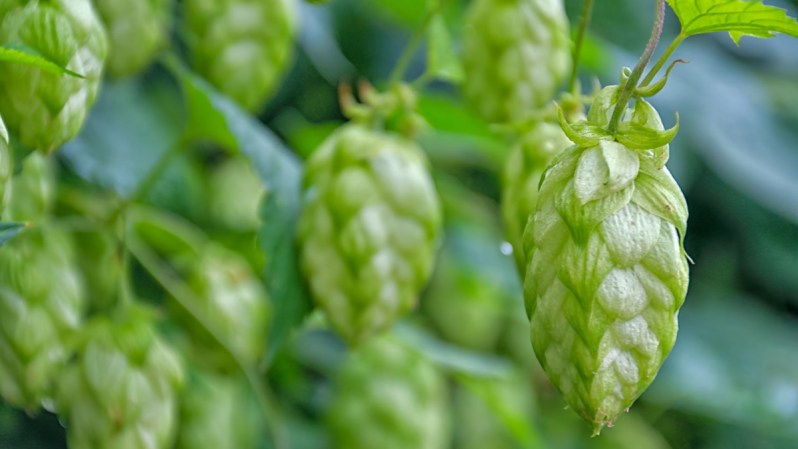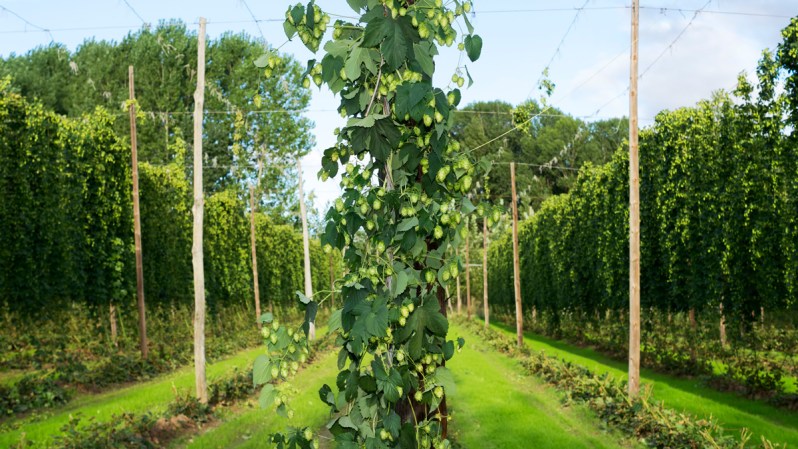
Humulus lupulus — known to Joe Everyman as hops — are the aromatic, bitter, and flavor-enhancing vegetables that add so much deliciousness to beer. If you’ve ever wanted to grow your own hops, now is the perfect time of year to get started.
While growing hops may seem like a no-brainer for home brewers, well-tended hops also make a decorative trellis or screen planting with a personal twist for beer enthusiasts as well. Late spring’s milder temperatures provide the ideal climate to pick up some starter plants and see if your green thumb is as strong as your beer-tasting skills.
To begin your hop journey, you need hop rhizomes, which are short segments of roots from mature hop plants. If you don’t have a local nursery that sells hops, they can easily be mail-ordered in a dormant state. Prices start at around $4 for common plantings like Chinook, Columbus, and Willamette, but expect to pay a little bit extra for rarer varieties.
If you’ll be using the hops for brewing, then choosing which hop to plant depends on your personal preferences. If the plan is to put the hops into different batches, it may be best to go with a mild, all-purpose, bittering hop so that you can use it for many different beer styles. However, if you only crave big, resiny IPAs, growing a more specific hop like Newport may be a better investment.

The local climate will play a huge part in your growing success. The good news is that hops tend to thrive in the majority of the country where the average annual extreme minimum temperature is between -30 and 20 degrees Fahrenheit. Unless you’re in Alaska, Hawaii, the deep south, or far west, you can probably grow hops in your yard.
You’ll want to make sure your growing area has lots of space and direct sunlight. Hops grow as climbing vines that, when mature, can reach up to 25 feet tall. Shortly after planting, you can expect a hop vine to grow about a foot per day. A trellis or other support structure is highly recommended to keep the plant from overtaking other vegetation or buildings. Regular drip irrigation into fertile soil will give the plants a solid head start.
Hops were called a “wild and pernicious weed” by King Henry VIII, in reference to the tenacity of the plant. Once they take off, they are hardy, thriving plants that are easy to maintain and provide not only backyard shade but also one of the most important and delicious ingredients used in brewing.
For more on growing your own hops or other beer ingredients, check out The Homebrewer’s Garden by Dennis and Joe Fisher. Recommended sites to order hop rhizomes include eBrew, Great Lakes Hops, and More Beer.
Editors' Recommendations
- How to start your own home bar: the tools and mixers
- Benefits of ginger: 6 reasons why you should add it to your grocery list today
- You need to start adding beer to your waffle batter – here’s why
- How to prevent a hangover: 4 steps you should always take before heading to bed after a busy night of drinking
- Why you should fat-wash your whiskey in brown butter


